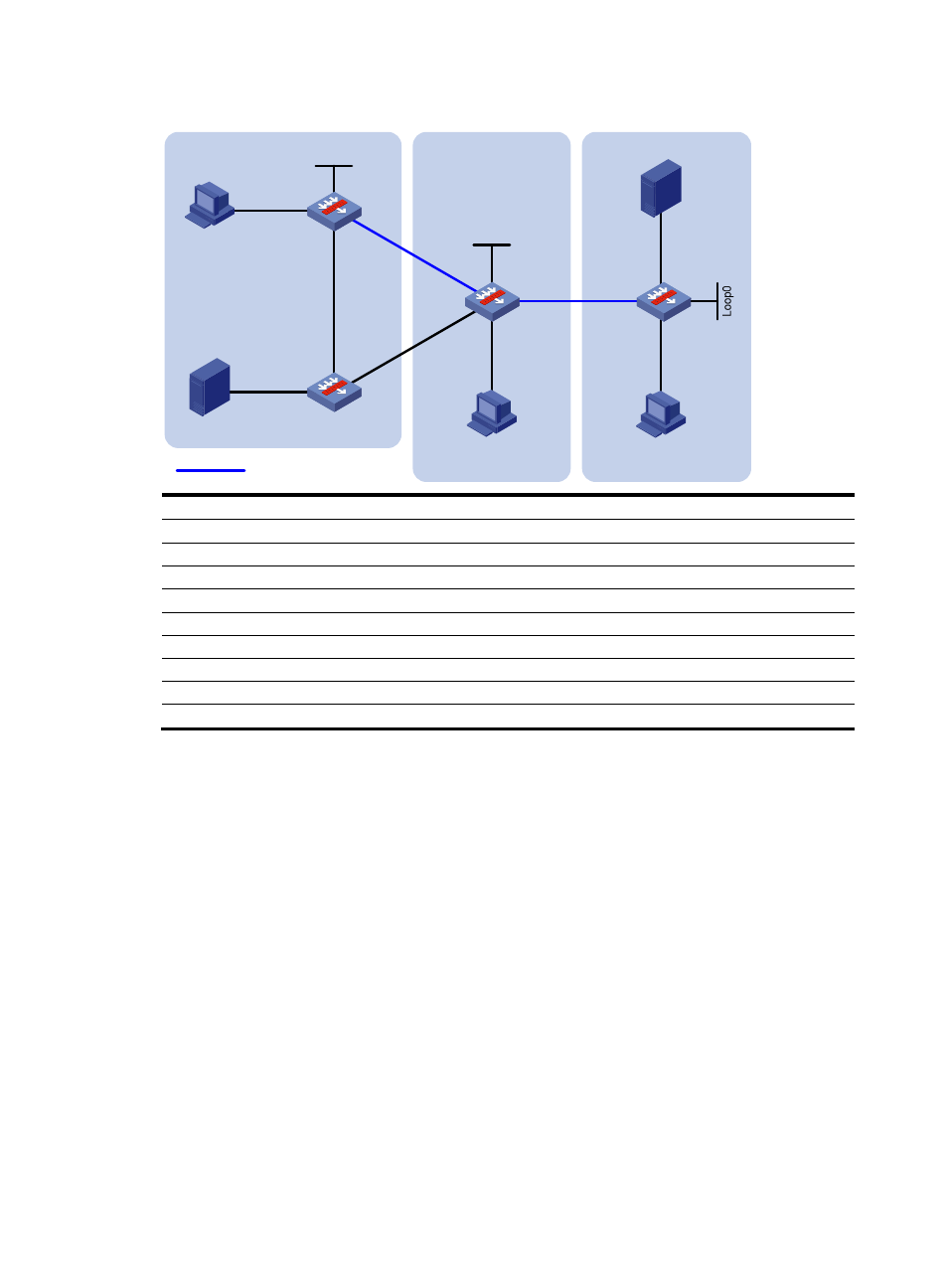Configuration procedure – H3C Technologies H3C SecPath F1000-E User Manual
Page 697

672
Figure 352 Network diagram
Device Interface
IP
address
Device
Interface IP
address
Source 1
—
10.110.3.100/24
SecPath C
GE0/1
10.110.4.1/24
Source 2
—
10.110.6.100/24
GE0/2 10.110.5.1/24
SecPath A
GE0/1
10.110.1.1/24
GE0/3 192.168.1.2/24
GE0/2
10.110.2.1/24
GE0/4
192.168.2.2/24
GE0/3
192.168.1.1/24
Loop0 2.2.2.2/32
Loop0
1.1.1.1/32
SecPath D
GE0/1 10.110.6.1/24
SecPath B
GE0/1
10.110.3.1/24
GE0/2
10.110.7.1/24
GE0/2
10.110.2.2/24
GE0/3 10.110.5.2/24
GE0/3
192.168.2.1/24
Loop0 3.3.3.3/32
Configuration Procedure
1.
Configure IP addresses and unicast routing:
Configure the IP address and subnet mask for each interface as per
shown.)
Configure OSPF on the firewalls in PIM-SM domains to make sure the network-layer between
PIM-SM domains is interoperable and routing information among the firewalls can be dynamically
updated. (Details not shown.)
2.
Enable IP multicast routing, PIM-SM and IGMP, and configure a PIM domain border:
# On SecPath A, enable IP multicast routing, enable PIM-SM on each interface, and enable IGMP
on the host-side interface, GigabitEthernet 0/1.
<SecPathA> system-view
[SecPathA] multicast routing-enable
[SecPathA] interface GigabitEthernet 0/1
[SecPathA-GigabitEthernet0/1] igmp enable
[SecPathA-GigabitEthernet0/1] pim sm
[SecPathA-GigabitEthernet0/1] quit
[SecPathA] interface Gigabitethernet 0/2
[SecPathA-GigabitEthernet0/2] pim sm
MSDP peers
PIM-SM 1
PIM-SM 2
PIM-SM 3
Loop0
Loop0
Source 1
Source 2
Receiver
Host B
Receiver
Host C
Receiver
Host A
GE0/1
GE0/1
GE0/1
GE0/2
GE0/2
GE0/2
GE
0/3
GE
0/3
GE
0/3
GE
0/4
GE0/2
GE0/3
GE0/1
SecPath A
SecPath C
SecPath D
SecPath B